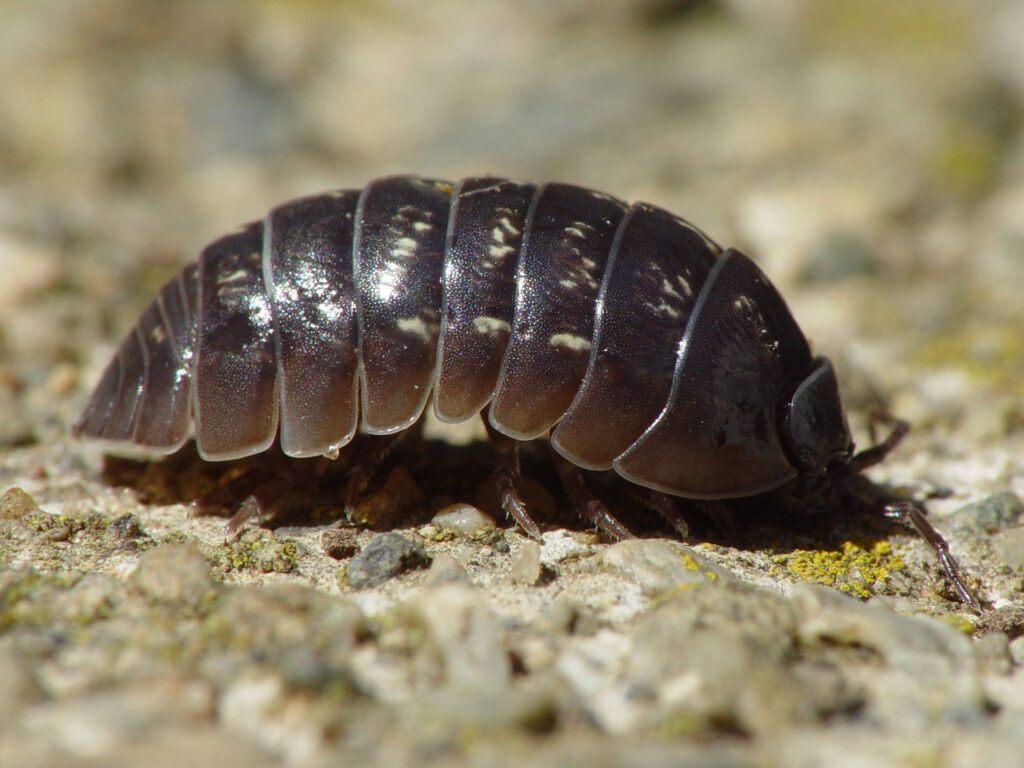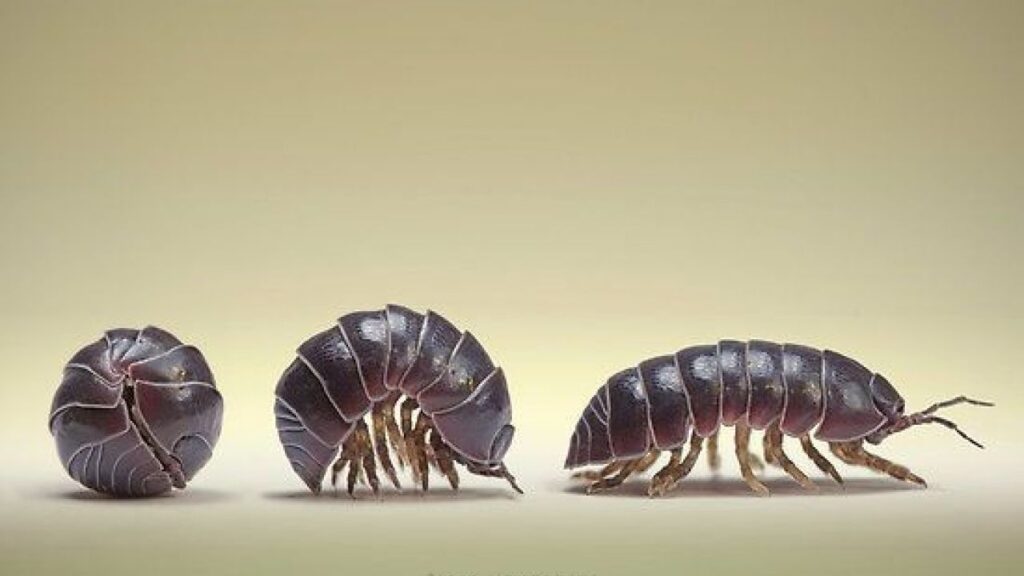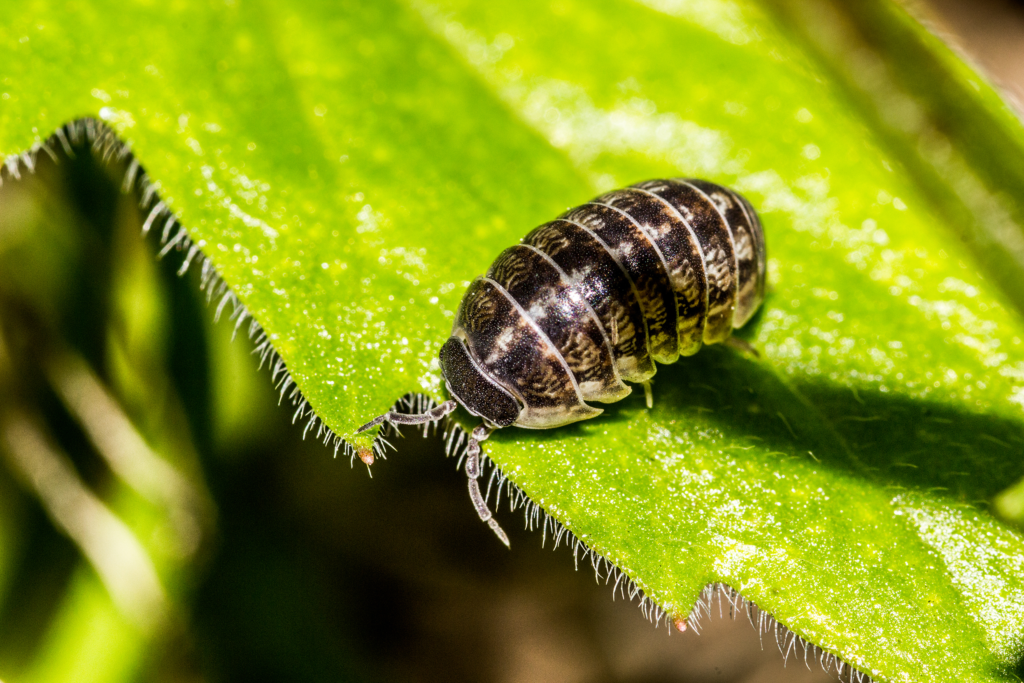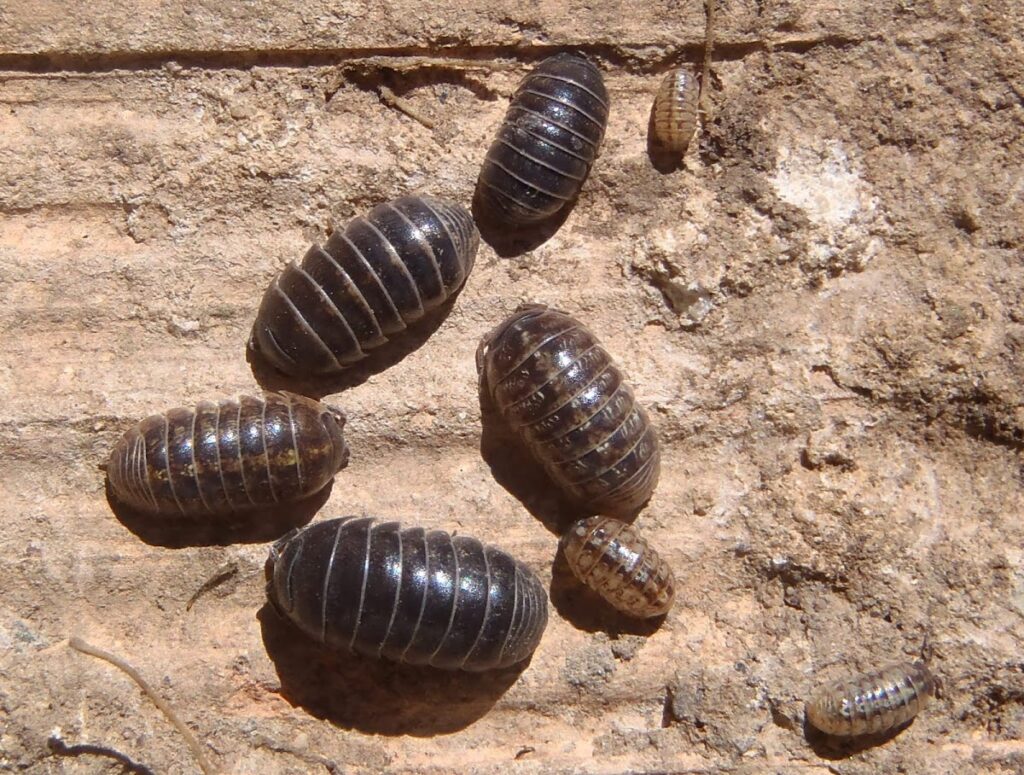The Moisture Cochineal is a small creature that is well known for the hard shell that protects it. But the feature that pleases and amazes the most is its ability to roll up on itself to form a ball. Formerly it was classified as an insect but it was later confirmed that it is indeed a crustacean.

What is the Moisture Cochineal?
The moisture mealybug, as the Oniscidea is popularly known, is not an insect as many considered, but a curious crustacean that has been able to adapt to the terrestrial environment. According to the region where it is located, it is known as little pigs, little pigs, little pigs, humidity bug or the most frequent of all, ball bug, which refers to its ability to roll up on itself like a ball. like armadillos.
Characteristics of the Moisture Cochineal
The cochineal has a flat body. The head section and abdomen are minuscule when compared to the much larger thorax. Its body is covered in seven individual, rigid, slate-grey overlapping plates, and its abdomen consists of seven joints. It also has a stomach that has six joints of tiny size.
They can reach a length of one and a half centimeters in length, and perhaps one and a half centimeters in width. They have seven pairs of legs, each presenting a rounded shape. At the end of its tail it shows a pair of antennae, the first of which is small, and the second similar but enormous in size, as well as having several joints.
Most mealybugs can roll up on themselves, even hiding their legs and head, to form a ball when they perceive threats, or if their space is very small. For this purpose, its exoskeleton is made in the shape of an accordion, which favors its rolling, thus protecting the most delicate parts of its body. The cochineal is similar to a bedbug, which when touched becomes a kind of ball that protects it, while the cochineal does not completely transform into a ball. Here's how you can tell a bedbug from a mealybug.
The whitish spots on the exoskeleton of certain mealybugs are areas where it stores calcium, a mineral of great importance for creatures that must develop a new shell when it is time to molt. This process begins by shedding its posterior half, then its anterior half, and sometimes they feed on the resulting exoskeleton (exuvia).
Food
Its food consists of vegetable matter and animal remains, its mouthparts have adapted to chew solid elements, such as leaves and exoskeletons of deceased insects. For their reproduction they have a particular abdominal bag or sac in which they accumulate their eggs, engendering tiny versions of the adults, which develop by shedding their skin until they reach maturity. Also in their diet there is room for algae and lichens that develop in areas such as trunks and walls of trees.
Behavior
Their behavior is nocturnal and they usually walk alone, living in the vicinity of their food source. They are usually located in shady and damp places, such as in decaying wood or in cracks and crevices, since they need to be in contact with a moist area to breathe.
Distribution
This species, despite being native to Europe, is widely distributed in North America, where it was introduced a long time ago and currently has a significant presence throughout the continent. Today these terrestrial crustaceans can be found almost anywhere in the world.
Reproduction
The male of this species woos a female by flicking his antennae and licking and licking his potential mate. After fertilizing her on one side, the male will move to the other side to mate again. The fertilized eggs are kept in a bag under the female's body until hatching, after which they emerge from the bag to appear as if the female is giving birth.
Females can accumulate sperm from a single fertilization for up to a period of one year; therefore, they have the power to decide when their young will be released abroad, probably at a time conducive to their survival.
Predators
Their potential predators are mostly made up of invertebrates such as beetles, centipedes and a specialized class of spider that can pierce their exoskeleton with their highly pointed mouthparts called chelicerae.
Habitat of the Moisture Mealybug
The mealybug can be found in a wide variety of habitats, which are usually moist and dark. Generally, they are obtained by turning over the occasional rock or by feeding on decaying wood. From a practical perspective, mealybugs play an important role in the process of transforming organic matter in any environment.
Just like worms, in addition to decomposing organic matter, they can feed on their own feces and those of other organisms. Thus, they benefit a lot from the remains and speed up their transformation, which contributes to obtaining compost in a short time, and of excellent quality.
State of conservation
The cochineal is found almost anywhere in the world and in a multitude of areas. They are very adaptable creatures as long as the chosen environment provides them with some moisture. For this reason this modest animal is classified as Least Concern (LC)
Relationship with Humans
This tiny crustacean ranks among the animals that generate pleasure and curiosity when we see them curl up into a ball every time they are touched, possibly an anti-predator adaptation. For this reason, these tiny invertebrates are sometimes kept as pets.
Earth crustaceans?
Most of the crustaceans are aquatic and marine, but a smaller quantity is frequent in fresh water and an even smaller quantity has escaped from the aquatic kingdom throughout the evolutionary process, among them are the terrestrial isopods, of which they form part the cochineal
Aquatic crustaceans have rows of gills for their underwater breathing process, but land-based crustaceans breathe using some of these same accessories adapted for aerial respiration. These branched appendages have developed over time on modified hind limbs, linked to a large supply of blood to transport respiratory gases.
These structures must be kept humid, since gases spread through water, in such a way that terrestrial isopods have to live in humid places, despite the fact that this species can live in more or less dry areas. Numerous adaptations have served more than one function; coiling its body possibly decreases its water loss.
Other items we recommend are:


